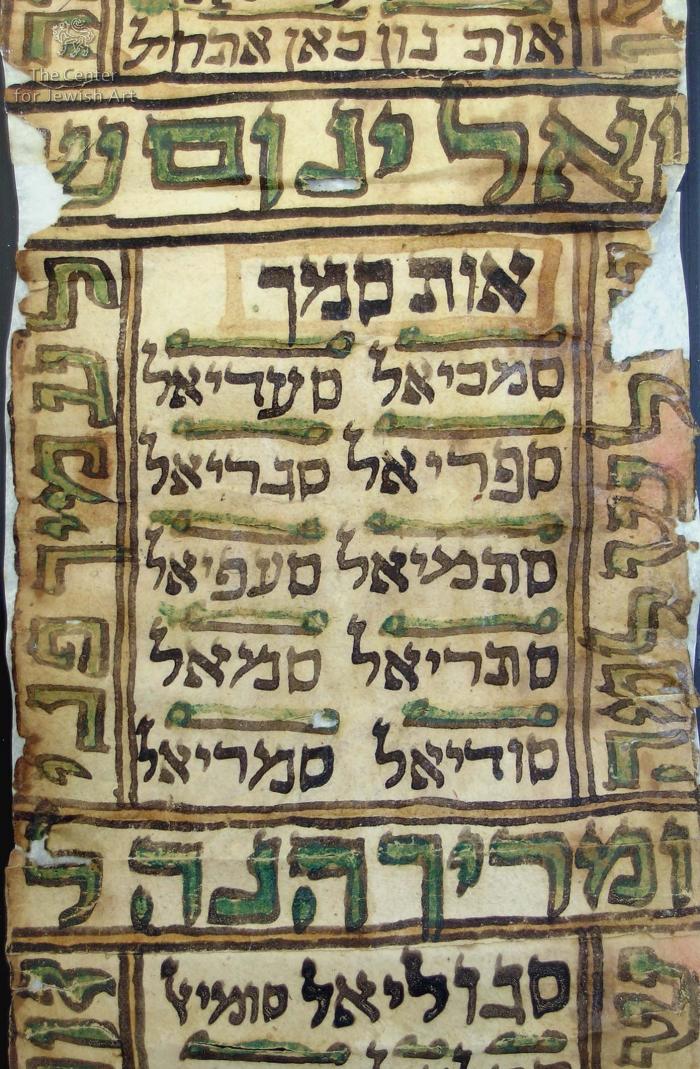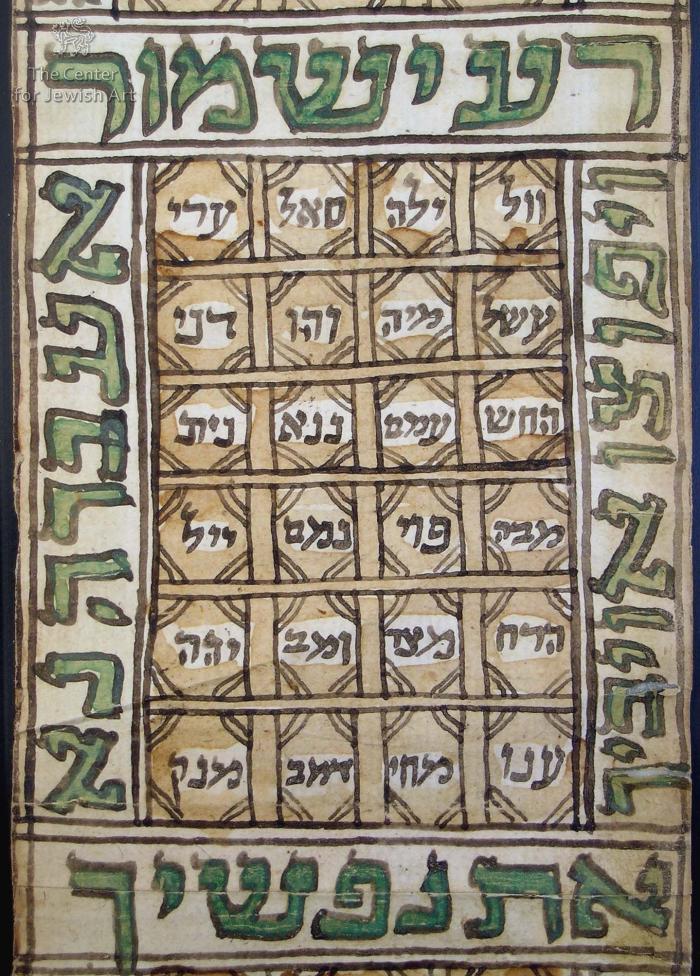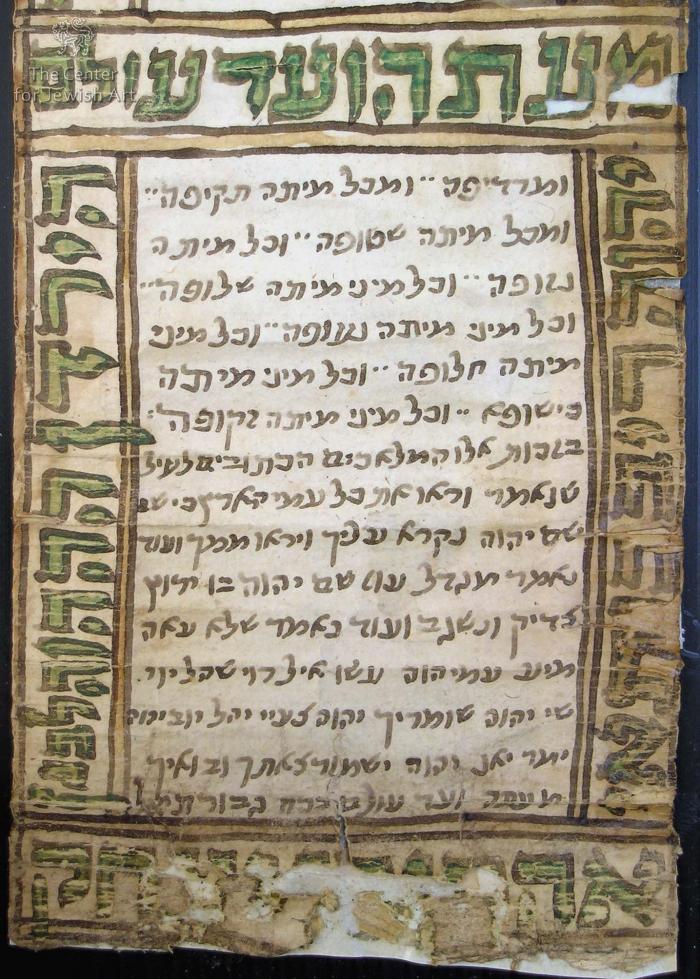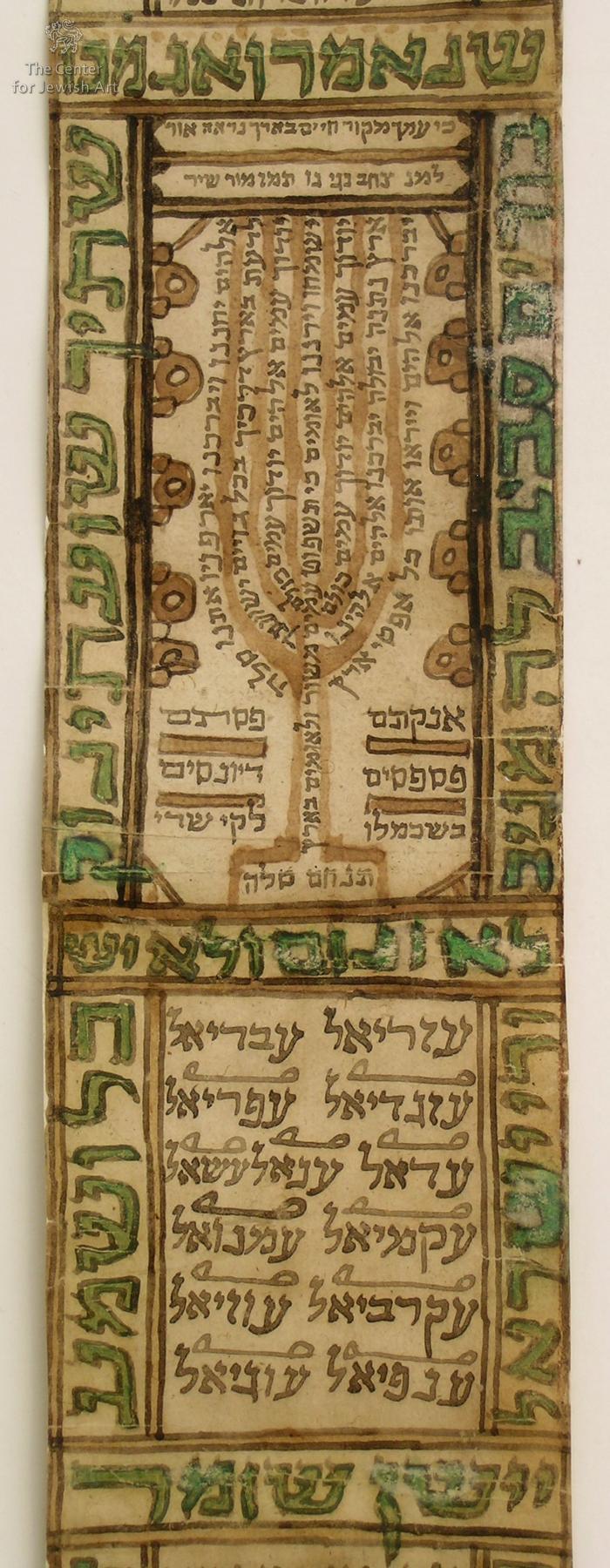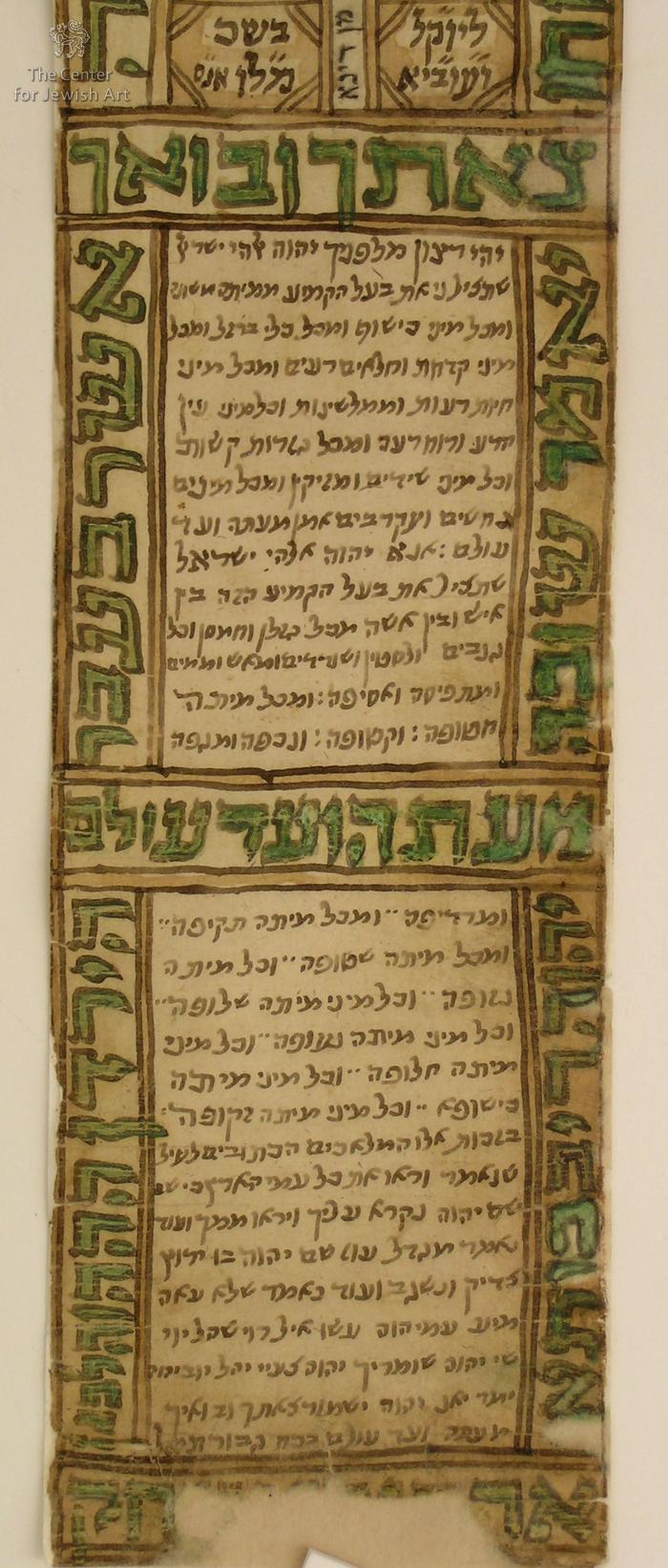Obj. ID: 50553 Amulet, Kurdistan, circa 1900

sub-set tree:
The following description was prepared by William Gross:
This example is one of the most unusual in the Gross Family Collection. Even though this amulet fragment is 180 cm long it is probably only about half the full length of the complete original. The amulet is constructed according to the Aleph-Bet, each letter having a section with the names of the angels that begin with that letter. Only eight full sections of the 22 letters are on this fragment.
It is the only scroll amulet in the collection on which is presented a full Shiviti menorah in a section after the letter "Samech". In the section in which begins the letter "Resh" is written in a different hand than that of the scribe the name of a male. It would appear that this was added after the amulet was written and is inscribed a second time alongside the letters "shin" and "Taf". After the last letter is written the 72-letter name of God in the middle of which is written another name, that of Yochanan the son of Rachel & Ezra mentioned above. Apparently, the amulet was handed down from father to son.
The amulet is fully painted in colors and aesthetically divided into square and horizontal sections, all of which are surrounded by an inscription of filled letters running the entire length of the two sides of the amulet. The last part of the fragment contains the Yehi Ratzon prayer.
The probable origin of the amulet is Iraqi Kurdistan. Both the filled letter inscriptions and the unusual length are typical of that region.



